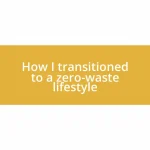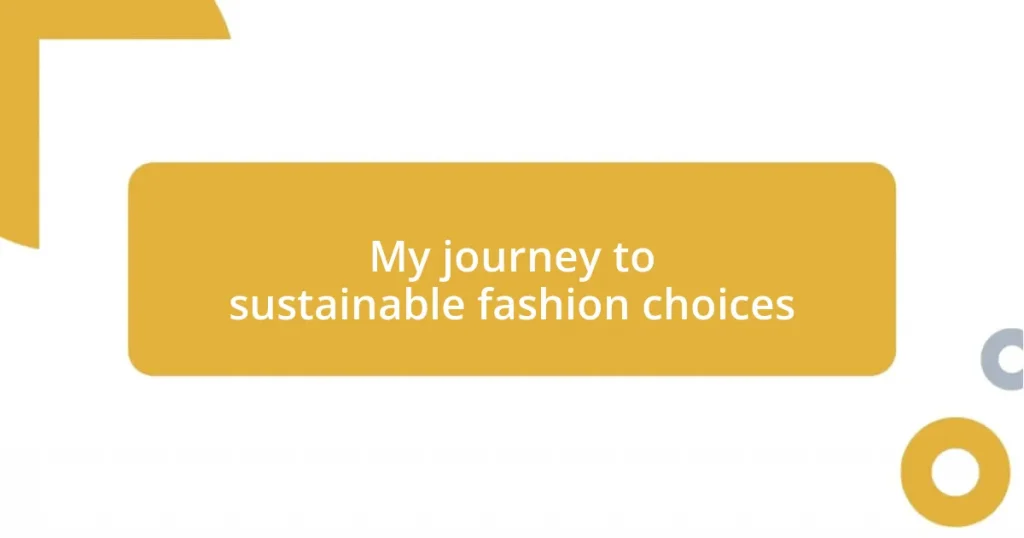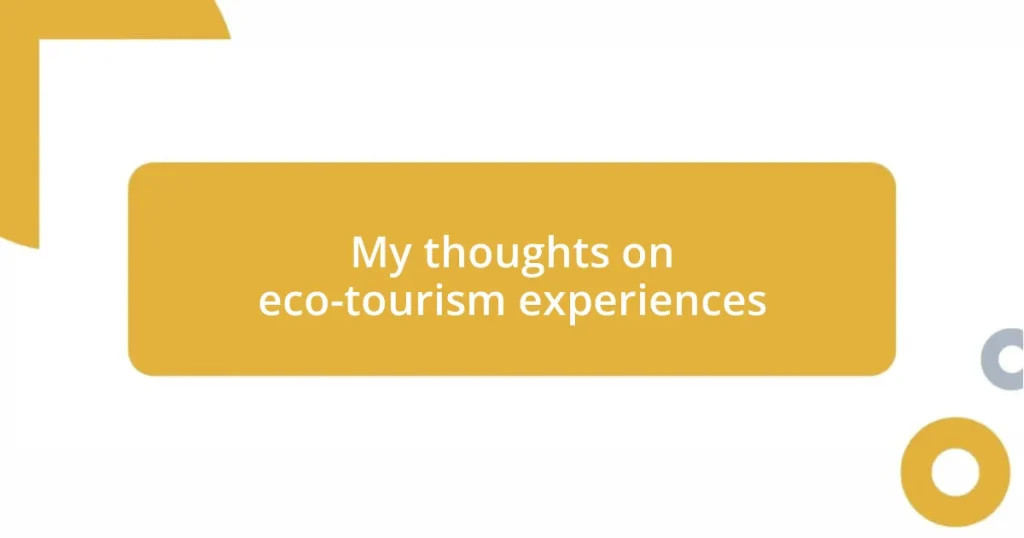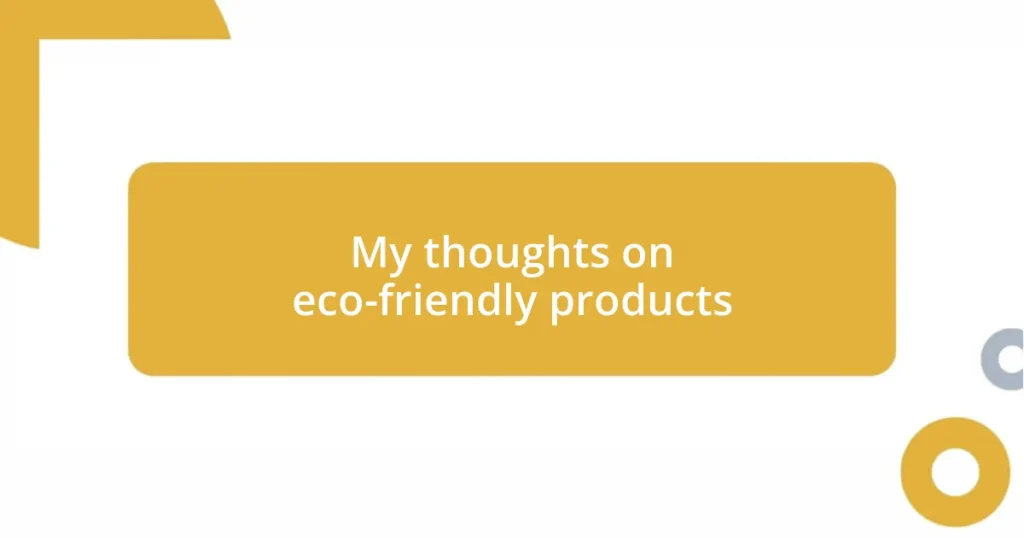Key takeaways:
- Sustainable fashion addresses environmental and social issues, promoting ethical practices while allowing for personal style expression.
- Identifying ethical brands involves examining transparency, certifications like Fair Trade, and personal recommendations.
- Building a capsule wardrobe reduces decision fatigue and encourages investment in high-quality, timeless pieces.
- Caring for clothes sustainably includes proper washing, storage, and repair, fostering a mindset against wastefulness.
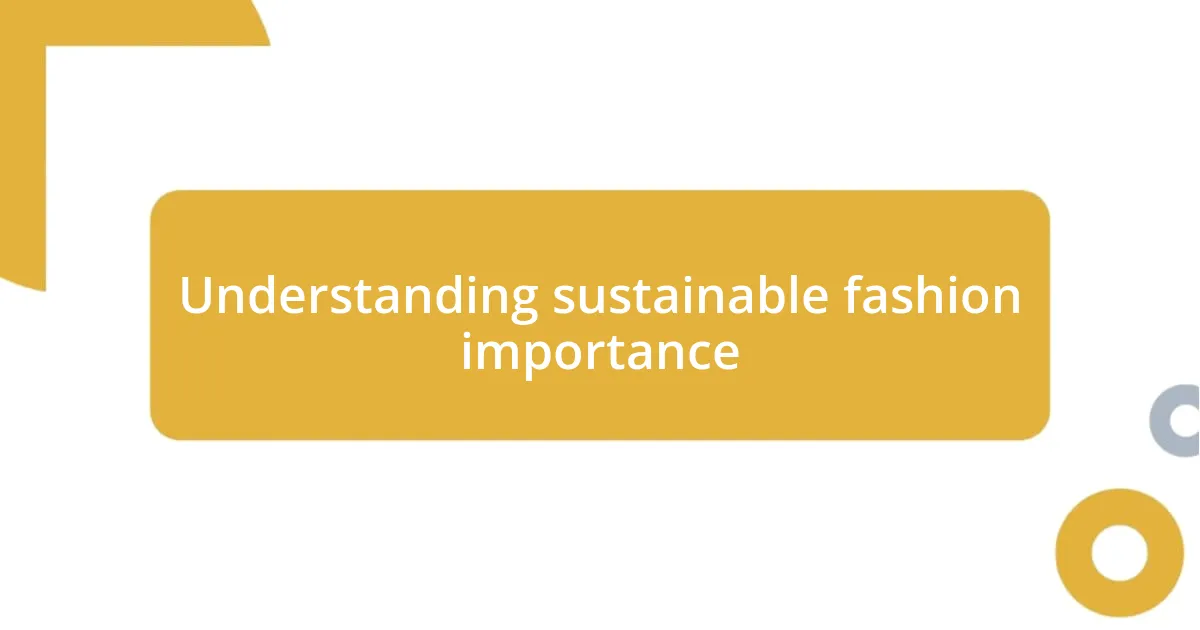
Understanding sustainable fashion importance
Sustainable fashion holds profound importance as it directly addresses the environmental and social challenges posed by the traditional fashion industry. I remember the first time I learned about the staggering amount of waste produced by fast fashion; it was a real eye-opener. Can you imagine clothing ending up in landfills for decades, or even centuries? The impact of my choices became crystal clear, sparking a desire to make a difference.
This shift is not just about reducing waste; it’s also about promoting ethical practices. Personally, I feel a sense of pride when I wear pieces that are made from sustainably sourced materials or created by artisans receiving fair wages. Don’t you think it’s empowering to know that our fashion choices can support communities and conserve resources simultaneously? My journey into sustainable fashion has transformed the way I view my closet, turning it into a platform for positive change.
Moreover, sustainable fashion encourages creativity and individuality, moving away from the cookie-cutter styles dictated by mainstream brands. I’ve had the joy of discovering unique thrifted pieces that tell a story, sparking conversations wherever I go. Isn’t it fascinating how choosing sustainable options not only benefits the planet but also allows us to express our personal style? Embracing these choices feels like a step towards a more meaningful connection with what I wear.
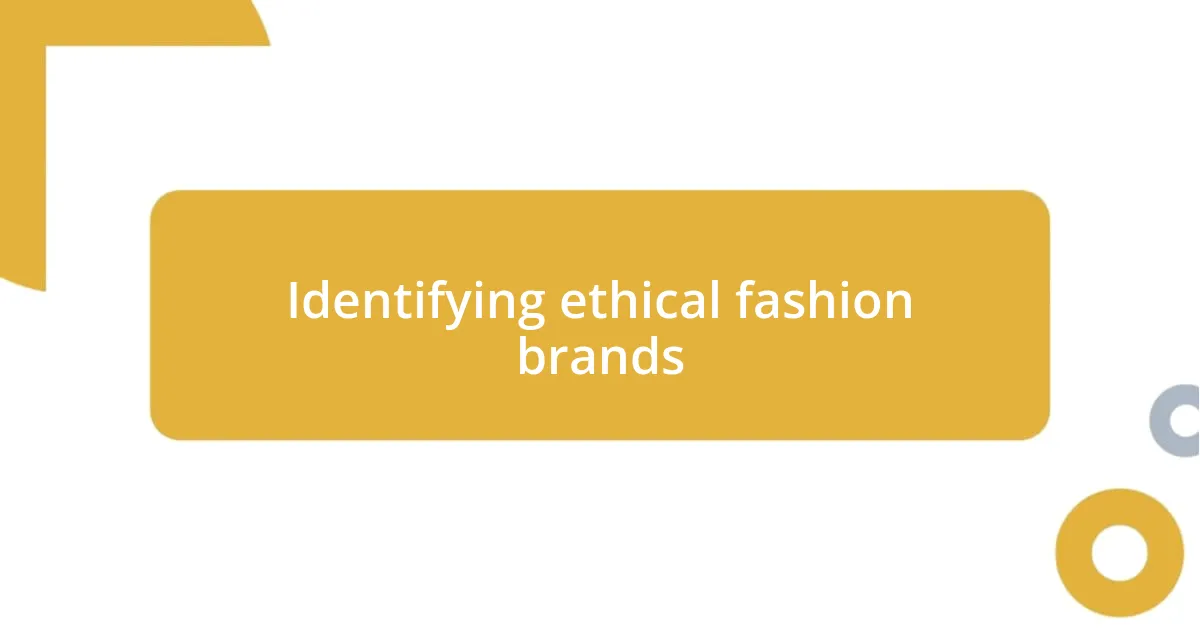
Identifying ethical fashion brands
Identifying ethical fashion brands can sometimes feel overwhelming; however, with a little guidance, it becomes much easier. I often start by researching the brand’s transparency regarding its manufacturing processes. For example, I appreciate brands that share where their materials come from and how their garments are produced. When I find a brand that openly supports fair labor practices and discloses its supply chain, it’s a major green light for me.
Another effective way I identify ethical brands is through independent certifications. Did you know that labels like Fair Trade, GOTS (Global Organic Textile Standard), or B Corp can be significant indicators of a brand’s commitment to ethical practices? I always feel more confident about my purchase when I see these certifications, as they reflect a brand’s dedication to ethical standards and sustainability.
Lastly, I trust people’s voices. Community reviews and recommendations play an important role in my decision-making process. I vividly recall a conversation with a friend about her experience with a lesser-known sustainable brand. She mentioned the quality and the care they put into their clothing, which solidified my interest. Wouldn’t you agree that personal endorsements can make all the difference when navigating the world of ethical fashion?
| Brand | Certifications |
|---|---|
| Patagonia | Fair Trade Certified, B Corp |
| Eileen Fisher | GOTS, B Corp |
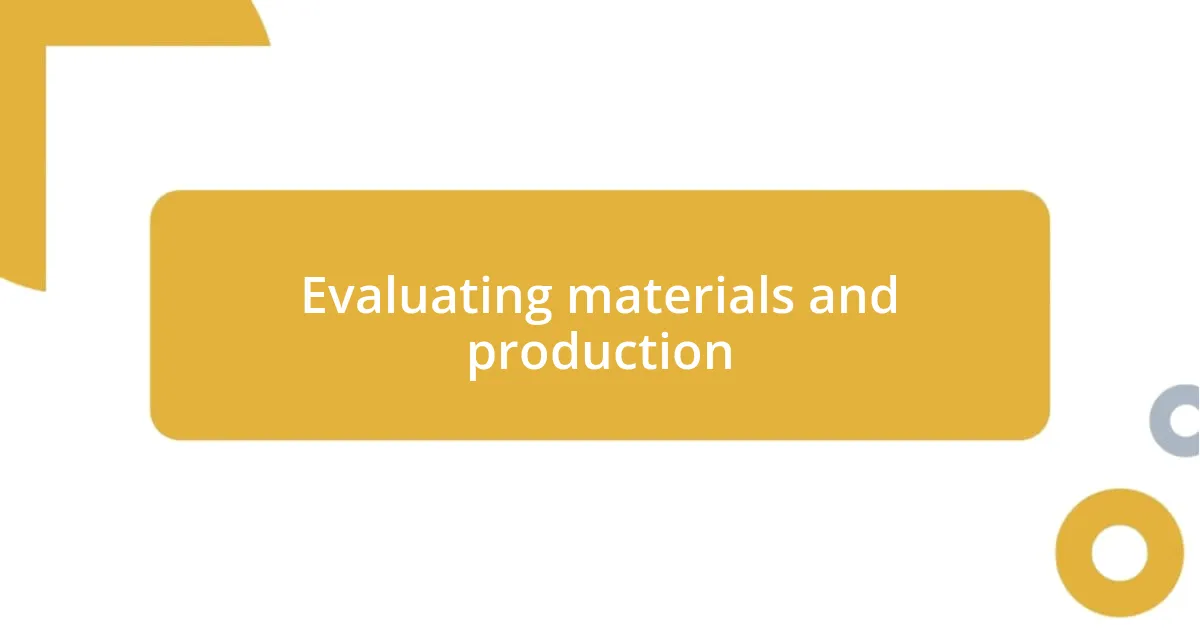
Evaluating materials and production
When considering sustainable fashion, evaluating materials and production is pivotal. I’ve learned that the fabric choices greatly influence the overall impact of a garment. For instance, I used to buy clothes made from polyester without a second thought, but now I seek out natural fibers like organic cotton or TENCEL™. These materials not only feel better against my skin, but they often have a lower environmental footprint compared to synthetics.
Here are some key aspects I keep in mind while evaluating materials and production:
- Sustainability of Materials: I always check if materials are organic, recycled, or sustainably sourced.
- Water Usage: Fabrics like hemp require less water to grow compared to cotton, which has been a game changer in my choices.
- Chemical Usage: I avoid materials dyed with toxic chemicals, opting instead for brands that use eco-friendly dyeing processes.
- Production Processes: Transparency about production methods gives me peace of mind; brands that share this information tend to foster more sustainable practices.
In my quest for sustainable options, the discovery of local artisans creating handmade garments from upcycled materials has been particularly inspiring. Visiting a local market where artisans showcase their creations left me with a profound appreciation for the skill and time invested in each piece. I couldn’t help but feel a connection to the people behind the clothing I now choose to buy. It’s incredible how understanding material choices and production methods transforms my shopping experience into something more meaningful and personal.
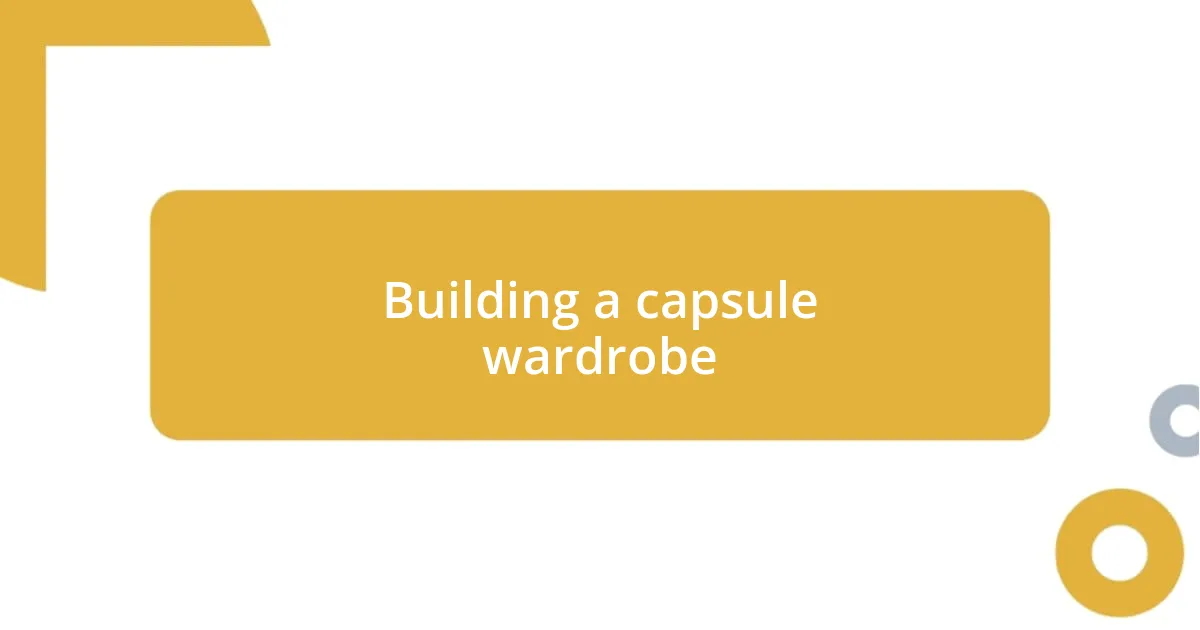
Building a capsule wardrobe
Building a capsule wardrobe has truly changed the way I approach fashion. Instead of cluttering my closet with trend-driven pieces, I select versatile items that can mix and match effortlessly. For instance, I invested in a classic white button-up shirt and a tailored blazer; it amazed me how these staples transformed various outfits for work or casual outings.
One of the most liberating aspects of a capsule wardrobe is the reduction in decision fatigue. I remember those mornings spent sifting through a sea of clothes, feeling frustrated. Now, with only a curated selection to choose from, I can confidently get dressed and enjoy my mornings. How refreshing is it to have a streamlined selection that reflects my personal style while also being mindful of sustainability?
I also make a point to choose high-quality pieces that stand the test of time. While it might be tempting to grab fast fashion bargains, I remind myself of the long-term benefits of investing in something that lasts. Recently, I bought a pair of ethically made jeans that cost a bit more upfront, but the durability and comfort have made them a favorite in my wardrobe. It’s a wonderful feeling to know that my choices are contributing to a more sustainable future while allowing me to express my individuality.
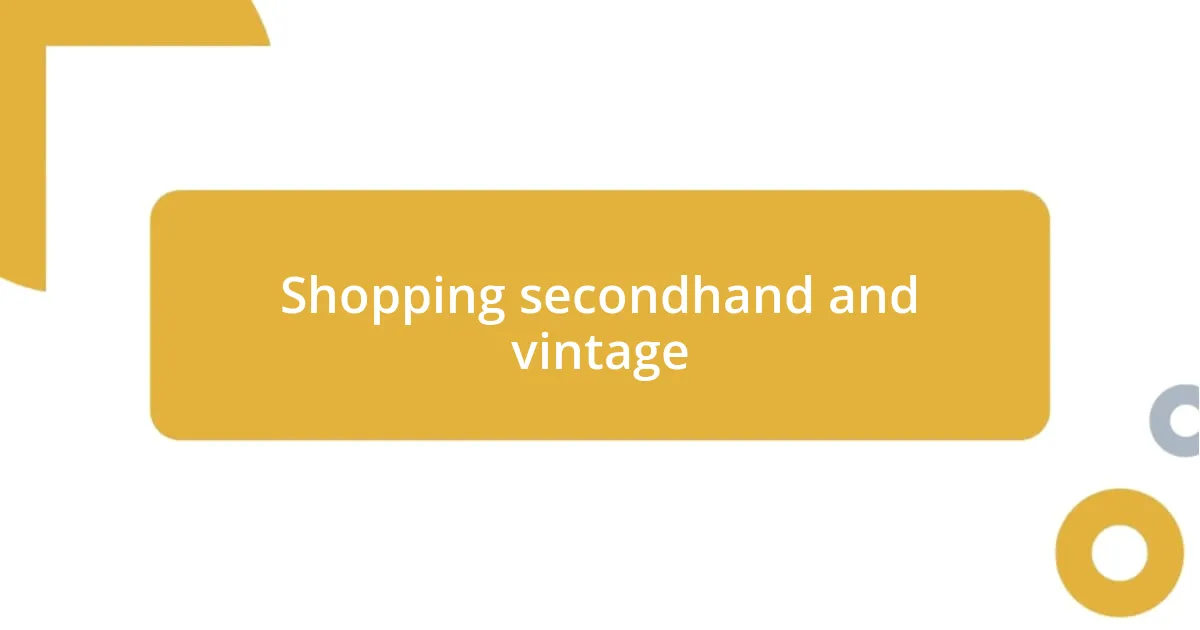
Shopping secondhand and vintage
It’s amazing how shopping secondhand can feel like treasure hunting. I often find myself wandering through local thrift stores or vintage shops, excited by the prospect of discovering unique pieces that have their own story. Just the other week, I found a beautifully embroidered jacket from the 80s. It was like finding a hidden gem, and I couldn’t help but think about the countless times it must have been worn and loved before it came into my hands.
The thrill of secondhand shopping also lies in the sustainability factor. I used to feel guilty about my fast fashion habits, but now I’m proud of each vintage piece I add to my wardrobe. Every item feels like a small victory against the throwaway culture. Sometimes I wonder: how many new clothes does the planet really need? When I choose secondhand, I feel like I’m making a tangible difference, one unique outfit at a time.
Connecting with the stories behind my clothing has become incredibly meaningful. I remember trying on a pair of retro jeans that were outrageously cool but painted with a bit of wear and character. It sparked a conversation with the shop owner about the era they came from, leading to discussions about fashion trends and their environmental impact. Experiences like these immerse me in a community that values history and sustainability, turning each shopping trip into an unforgettable adventure.
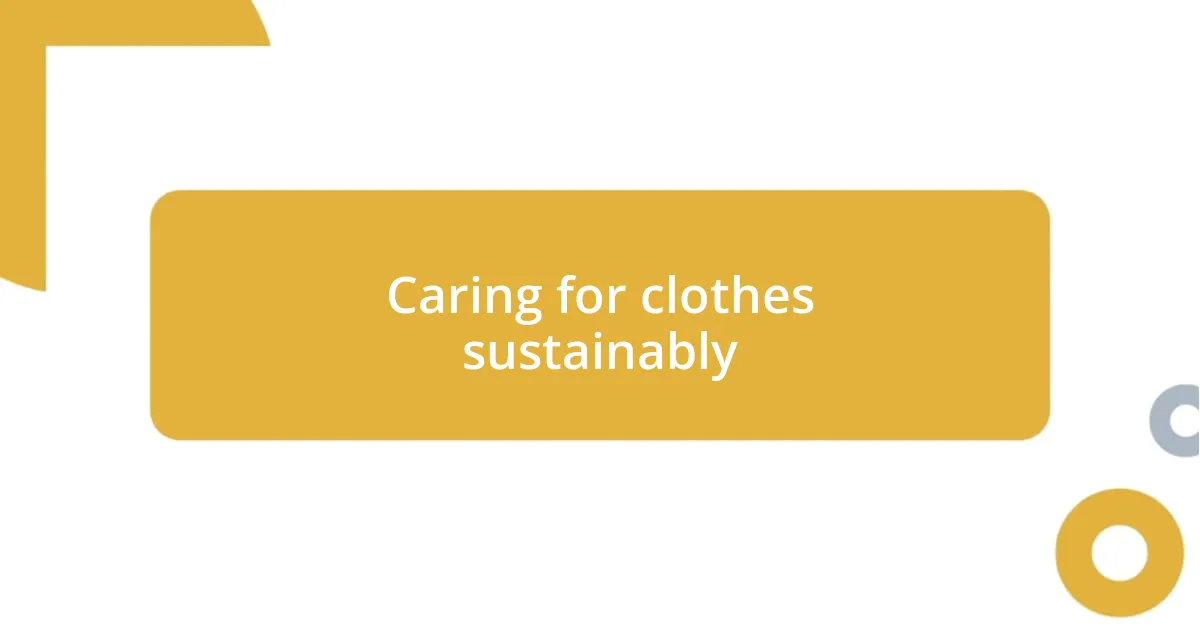
Caring for clothes sustainably
Caring for clothes sustainably starts with how we wash and care for them. I’ve learned that using cold water and air drying not only saves energy but also extends the life of my garments. Recently, I decided to try a little experiment: I washed my favorite cotton sweater in cold water instead of hot, and to my surprise, it looks just as vibrant as it did on the first day. Who knew that such a simple change could have such a big impact?
Another aspect of sustainable clothing care is proper storage. I’ve swapped out flimsy hangers for padded ones, and it’s amazing how this simple adjustment has preserved the shape of my clothes. I used to have a habit of tossing garments casually into the closet, but now, I take a moment to fold or hang each piece with care. This shift made me realize how much I cherish my wardrobe—seeing everything neatly organized brings me genuine joy.
I also make a point to repair rather than replace. There was this pair of beloved ankle boots that developed a small tear, and instead of discarding them, I took them to a cobbler. Watching someone lovingly mend my shoes felt like a small act of rebellion against a throwaway culture. Sometimes I ask myself—what if we all chose to fix instead of throw away? That’s when I truly understand the value of prolonging the life of my clothes and embracing sustainable practices.
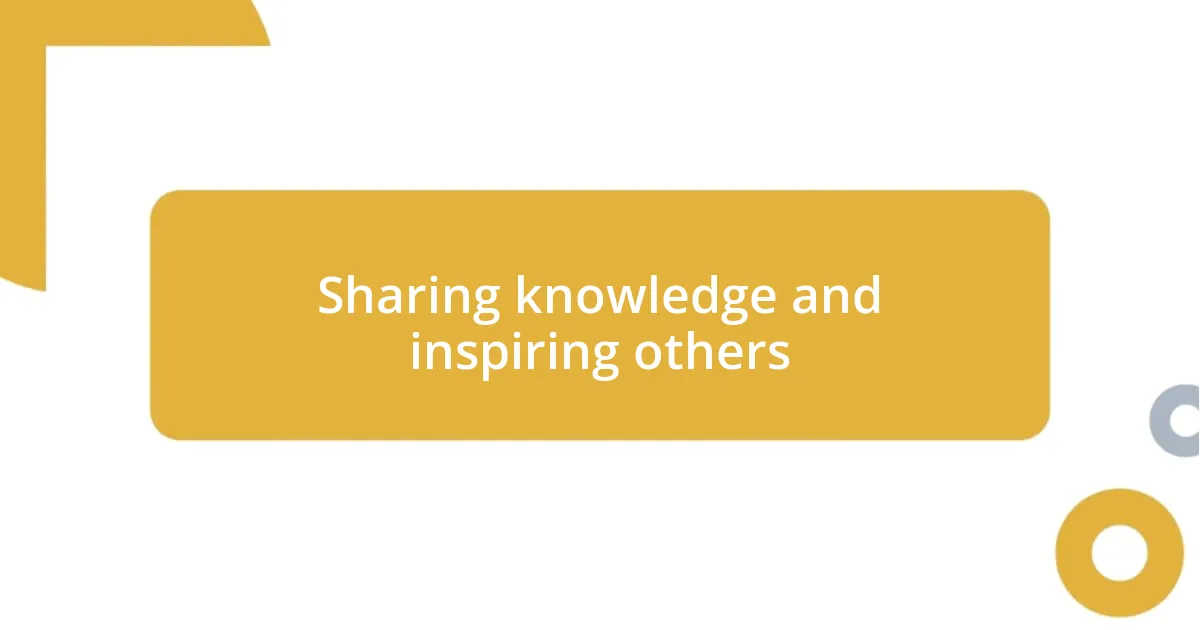
Sharing knowledge and inspiring others
Sharing knowledge about sustainable fashion is vital, and I’ve found that one of the best ways to inspire others is through storytelling. Just the other day, I attended a local workshop on upcycling old clothing. Sharing my own journey of transforming an old dress into a modern skirt not only sparked interest but also encouraged others to think creatively about their wardrobes. How often do we overlook the potential of what we already own?
In my experience, social media has also become a powerful tool for spreading the message of sustainable fashion. I remember posting a before-and-after photo of a thrifted blazer I revamped. The responses were heartwarming; friends reached out asking for tips and inspiration. It’s gratifying to know that sharing small victories can lead to meaningful changes in others’ shopping habits. After all, who wouldn’t want to be part of a movement that values creativity and responsibility?
Lastly, I often find that discussions around sustainable fashion can lead to eye-opening moments. A couple of weeks ago, during a casual dinner with friends, we dove into the topic of brand ethics. Sharing insights about companies prioritizing sustainability over profit opened their eyes and sparked a passion for making more conscious choices. How rewarding it is to witness that moment of realization when someone understands the impact of their choices!









